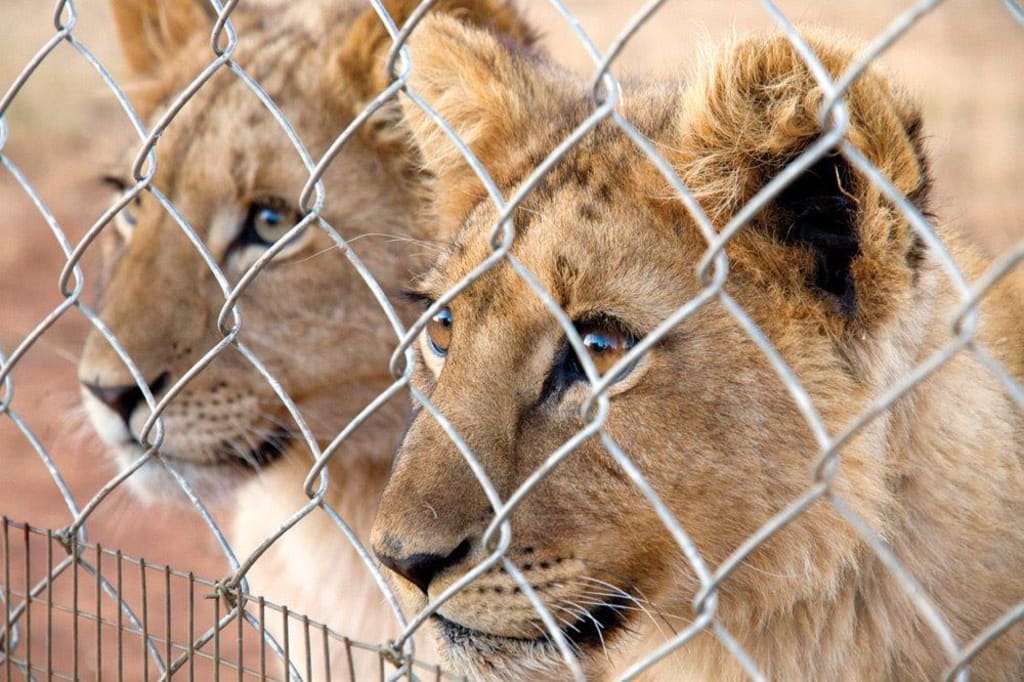Bred for the Bullet
The Reality of the Cub Petting Industry

Cub petting has risen in popularity in recent years due to the increase of social media content containing wild animal encounters, rides, walks, and selfies. Wildlife tourist attractions, WTAs, showcase a range of exotic animals and experiences including cub petting, walking with lions, tiger selfies, and bear feeding. Interactions are often presented as educational and tourists are sometimes told cubs are orphans that have been taken in by the business usually masquerading as a sanctuary. This increased consumer demand for wild animal interaction has provided the perfect opportunity for WTAs to turn their animals into profit centers for a non-stop flow of customers who fuel the photo-tourism industry. Unfortunately, businesses that offer wild animal interactions operate far from the idyllic connotations that the word “sanctuary” implies. Specifically, focusing on young cubs (including lions, tigers, jaguars, bears, leopards), being subjected to the unnecessary human interaction that directly disrupts their right to a natural upbringing, resulting in serious negative consequences for the physical and mental well being of the big cats involved.
Cub interactions including petting, cuddling, walking, playing and feeding – either from a bottle or by hand – are the most attractive WTAs and generate significant returns for businesses who offer the experiences. These organisations have also attracted celebrity attention; Beyoncé, visited Thailand’s disgraced tiger temple in 2015 and Katy Perry was photographed at Black Jaguar White Tiger Sanctuary earlier this year playing with young tiger and lion cubs. Both stars, as well as others who attended similar businesses, faced backlash on social media for attending the tourist attraction famed for their controversial practices. Of all WTA’s, cub petting is arguably the most controversial and tragic of all animal interaction experiences because of where cubs in the tourism industry end up after they have outgrown their playful size.
Typically, cubs are under a year old when advertised for cub petting experiences, although some businesses have been known to offer interaction with lions up to two-years-old, which is risky as the cub approaches adolescence and becomes more difficult to work with. The issue is the fact that the cubs are hand reared from such a young age resulting in a number of lions that are too dangerous to work with but too detached from their natural instincts to release into the wild. These animals have suddenly become problematic. The upkeep of big cats is a huge expense and with the lions bringing in no profit because of their dangerous age and size, they are no longer useful to the business. However, these cats are worth $10,000s in the hunting industry that they are sold into for the next phase of their life.
Once the petting cubs reach a certain age, usually two or three, they are then relocated to game farms where they are sold to hunters for canned trophy hunting. Canned hunting is the shooting of captive bred lions in enclosed spaces where the lion has no means of escape. The term comes from the idea that the hunt is "in the can" as the kill is 100% guaranteed for the hunter. These animals are held in overcrowded game farms which sometimes double as breeding farms for a shocking number of lions. Supplies, veterinary care, husbandry, and maintenance of any kind is abysmal in these huge farms. The natural pride structure is disrupted by the agenda of the business owners whose only focus is to breed and house lions. Newborn cubs are taken from their mothers so the female lions will go back into oestrus, allowing them to become pregnant quickly after giving birth. This is psychologically damaging for both the cubs and mothers as there is a complete lack of maternal bonding, which further negatively impacts the cub’s ability to have a good quality of life in captivity. These hand-reared cubs are housed together but have no older lions to learn from as they would naturally in a pride. What these unstable structures are essentially doing is creating a new breed of lion that is becoming increasingly more removed from wild lions, negating any conservation argument breeding farms have towards preserving the species because of such irresponsible and unnecessary breeding practices.
Whilst the breeding of captive lions arguably takes the pressure off wild lions to supply the very profitable hunting industry, there is the fact that the animals being supplied to these businesses are only fueling unfair, animal practices. Unnecessary human interaction with lion cubs is what drives the success of these businesses. If the demand for cub petting experiences decreased dramatically, these animals would not be bred in such a careless way resulting in disease and mutation. This disgraceful supply chain of lions to various businesses that demand live animals can be halted if people stop attending WTAs and stop supporting and idealizing wild animal interactions. It is ultimately detrimental to the whole species whose inevitable trajectory is a death caused by human intervention.
About the Creator
Molly Gill
Animal welfare. Heath and wellness. Business. Lifestyle.






Comments
There are no comments for this story
Be the first to respond and start the conversation.